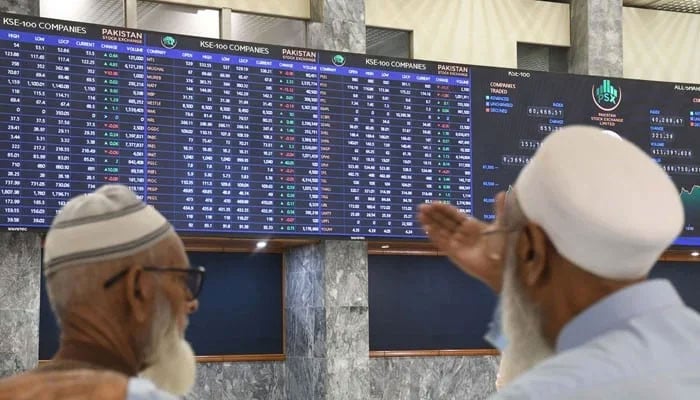KARACHI: The Pakistan Stock Exchange (PSX) carried its bullish momentum into the second week of FY26, with the benchmark KSE-100 index adding 2,351 points to settle at 134,299, reflecting a 2.0 per cent week-on-week (WoW) gain.
Analysts anticipate continued positive sentiment next week, backed by record-breaking remittances, elevated foreign exchange reserves and improved macroeconomic indicators. Investor focus will likely remain on corporate earnings, the planned Panda bond issuance, and further developments on foreign funding and debt management.
Syed Danyal Hussain, analyst at JS Research, credited the rally to several favourable macroeconomic developments. Among them, Pakistan received its highest-ever annual workers’ remittances, which totalled $38.3 billion for FY25, up 27 per cent year-on-year (YoY). June alone saw inflows of $3.4 billion, an 8.0 per cent increase compared to the same month last year. This inflow significantly strengthened the country’s external position, lifting investor confidence.
Additionally, the State Bank of Pakistan (SBP) reported that its foreign exchange reserves jumped by $1.8 billion WoW to reach $14.5 billion for the week ended July 4, marking a 39-month high. With commercial bank reserves included, the country’s total foreign reserves have now crossed the $20 billion mark for the first time in three years.
Average daily traded volume at the PSX stood at 948 million shares, while traded value reached Rs38.8 billion. Despite the sharp rally, average daily turnover (ADTO) dipped 2.0 per cent WoW, suggesting cautious participation as the index approached fresh highs.
Nabeel Haroon, ananalyst at Topline Securities, noted that the KSE-100 index rose 1.78 per cent WoW, driven largely by sustained buying from local mutual funds. Month-to-date, local mutual funds have recorded net inflows of $30 million, reflecting robust domestic institutional interest amid a shifting investment climate marked by declining fixed-income returns.
One of the week’s major highlights was the T-bill auction, where investor participation reached Rs2.7 trillion. The government successfully raised Rs1.41 trillion, with the yield on the 12-month paper declining by 13 basis points, an indicator of market expectations for further monetary easing.
Another positive driver was a substantial recovery in automobile sales. According to figures released by the Pakistan Automotive Manufacturers Association (PAMA), car sales recorded a significant 38 per cent gain in FY25, underscoring growing consumer confidence and purchasing power.
Investors also responded positively to news of a Dubai-based financial institution arranging a $1 billion financing facility for Pakistan, and reports of a possible breakthrough in trade talks with the US on reciprocal tariffs. These developments suggest improved bilateral cooperation and easier access to external funding.
On the fiscal side, the government reported the early retirement of Rs1.5 trillion in public debt during FY25, bringing the debt-to-GDP ratio down from 75 per cent in FY23 to 69 per cent. This development marks a major milestone in fiscal consolidation and signals the administration’s commitment to responsible debt management.
Meanwhile, preparations for Pakistan’s debut Panda bond issuance are progressing, with high-level meetings held in China this week to finalise arrangements. The bond, expected to be launched later this year, will help diversify Pakistan’s funding sources and bolster its external account stability.
Looking ahead, analysts expect the market to maintain its upward momentum, supported by the strong macroeconomic backdrop, expected monetary easing and anticipated corporate earnings announcements. However, investors will remain watchful of political developments, external financing flows and global oil price movements, which could shape sentiment in the near term.
